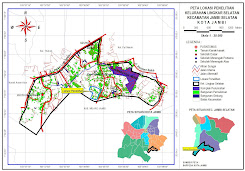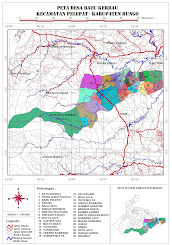The vast majority of good scientists today are comfortable with the current understanding of climate change, while recognizing that many complex components need continuous monitoring and measurements. At the same time, most scientists appreciate that basic knowledge of the physics of Earth’s systems needs further refinement and that the biological components and feedback mechanisms of Earth’s systems, though not fully known, play a significant role in climate change interactions and trends.
So what is the problem if a few scientists are not satisfied with knowledge of climate change science and do not agree with the consensus of the IPCC (www.ipcc.ch)? Fundamentally there is no problem. In fact, we should always cherish critical questioning of any hypotheses, data collection methods, or analyses of results. Unfortunately, a problem does arise when the empirical science of climate change has been whitewashed out of the public arena by climate change skeptic campaigns, many of which are financed by recalcitrant industries resisting environmental protection and Earth stewardship responsibilities.
Recent polling indicates that only about a third of our fellow citizens believe in climate change and in the links between fossil fuel, land use and the global climate phenomenon (www.pollingreport.com/enviro.htm). This proportion represents a precipitous drop in climate change awareness from just a few years ago. Such an appalling drop in citizen awareness of the scientific facts is disheartening to those of us who wish to focus our energy on issues of adaptation, mitigation, and societal transformation to obtain clean and renewable energy sources. The science of climate change is overwhelming. And that may be the problem. When people are overwhelmed, well, they simply cannot absorb the information. They turn off. This gap in citizen knowledge is being filled in with shock radio and biased television news programs that revel in their contrarian and conspiratorial disinformation campaigns.
Fortunately, climate change science curricula have received a lot of attention and funding by federal agencies over the past few years (e.g., NASA, NOAA, NSF, and others) to build academic understanding and to promote resources for universities and K-12 schools. This summer, the American Meteorological Society, in partnership with NASA, is launching Climate Studies: Introduction to Climate Science (1st Ed 2010 AMS). A significant library of student and investigator guides now exists with excellent and accessible writings on climate change, ranging from Tim Flanner’s The Weather Makers, to Jim Hansen’s Storms of My Grandchildren. Science and citizen awareness can and should be promulgated in every school to focus on explaining the hard facts regarding shifts in the Earth’s climate system, using visual Earth observation and field data.
A refreshing addition to the understanding of climate change and exposure to the science of shifting climate is evident in the work of Clark Labs, home of Idrisi remote sensing/GIS software. Clark Labs, directed by professor Ron Eastman, the 2010 winner of the Distinguished Career Award by the American Association of Geographers, is dedicated to getting climate change tools into the hands of citizens. Under Eastman’s leadership, Idrisi has been used in over 180 countries, making image processing and modeling accessible to thousands of government and university researchers across the world. Two new Idrisi applications, the Land Change Modeler and the Earth Trends Modeler, are particularly helpful in documenting climate change trends (www.clarklabs.org/products/Earth-Trends-Modeler.cfm). Pedagogic use of these, or similar remote sensing tools, might represent a new approach to demonstrating the facts of climate change.
To begin with, an empirical approach to climate change, the facts collected over the past century, must be placed before the student. The student should be encouraged to question and challenge each presented fact. Hard evidence should never avoid serious enquiry. From the time of Svante Arrhenius to Charles David Keeling, a litany of empirical facts has been largely ignored or unknown to the public (and sadly to many scientists too). The Keeling Curve is one of the most visually compelling datasets of our time and should be central to the dialogue for bringing together the climate change science puzzle (Figure 1). This curve can serve as the basis for a single lecture or a semester-long course, such is its power for science comprehension and research.
The overarching question that needs to be asked of this curve: If CO2 continues to fill our atmosphere as it is doing now, what will be the outcome? (The second question – What can we do about it? – is the more difficult to address due to political, economic, and societal challenges. Consider the December 2009 Copenhagen U.N. Climate Summit.) Regarding the first question, we can utilize the Idrisi tools to document empirical data from Earth observation satellites and can empower students and professors with direct, first-hand interaction with climate change science data. This kind of interaction creates a remarkable transformation in observer attitudes.Two new Idrisi applications, the Land Change Modeler and the Earth Trends Modeler, are particularly helpful in documenting climate change trends. Pedagogic use of these, or similar remote sensing tools, might represent a new approach to demonstrating the facts of climate change.
When we examine sea surface temperatures over the period 1982 to 2006 using the Earth Trends Modeler (an unfortunate name, as it effectively documents empirical data versus “models”) we can readily see that a warming trend is evident, notably in the northern hemisphere (Figure 2). Image time-series data are requisite to document global climate change and for exploring such global events as El Niño and related sea surface temperature anomalies and impacts.
The major challenge, however, is in isolating true change from measurement artifacts and normal environmental variability. A variety of techniques, including a coordinated suite of data mining tools for time series analysis, is needed to effectively document sea-surface and land-surface changes associated with climate change. These tools can be applied to demonstrating the seasons’ shifts, such as the earlier onset of spring for regions such as Europe (Figure 3).
As students become more familiar with the empirical science and climate trends over the past couple of decades, they become better ambassadors for public awareness. We need a lot more ambassadors in this world if we hope to change the current polling trends and possibly convert media-bred skeptics into knowledgeable citizens. This conversion will require the widespread adoption of tools like Idrisi to upgrade our current school curricula and create a cadre of educated climate change ambassadors.
Sumber : http://www.imagingnotes.com/go/article_freeJ.php?mp_id=222#1













Tidak ada komentar:
Posting Komentar